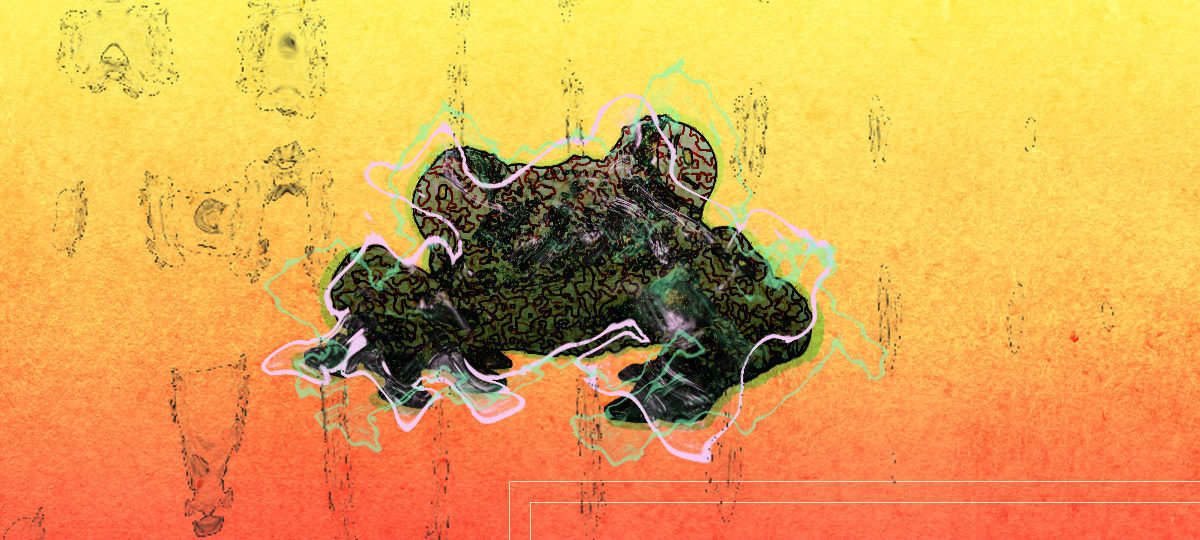
The 1990s were a decade which saw economic terms including Globalisation, Outsourcing, Downsizing & Corporate Restructure enter everyday speech, but the changes and reforms in Australia during the 1990s were not merely political and economic. Technological changes, and debates about Australia’s national identity and culture, also brought about powerful forces from multiple origins during the decade that shaped 90’s music and youth culture, from dance music and slick, dance-influenced pop such as that of Kylie Minogue to the inception of Australian grunge by Silverchair and a highly diverse array of idiosyncratic, unique alternative performing artists of all types reflecting a breathtaking depth and variety of creativity and talent. The key to the 90’s was an ‘anything goes’ ethos, it was an explosion of colour and creativity in which the only rule was that there were no rules and in Australia that ushered in a decade-long celebration of colourful, vibrant dance, pop, alternative and mainstream rock, bringing the youth together in all forms of cultural expression.
In the early 90’s, the Gulf War and the advent of live, televised bombings on CNN mobilized youth around the world and in Australia against the neo-conservative globalism spearheaded by George Bush. In Victoria, Premier Jeff Kennett introduced privatisation to Australia and closed down numerous state schools as a cost-cutting measure, causing widespread protest and social upheaval, while Federally, after the declining years of Bob Hawke, Paul Keating deregulated the banking sector, opened Australia up to Asia, particularly by improving trade and relations with Indonesia and presided over “the recession we had to have”. The HIV/AIDS crisis still raged as well, with no effective treatment available and the gay community in crisis with shocking numbers of deaths in inner city communities.
It was against this backdrop that the greatly varied music culture of the 90’s began. In pop, slick, dance-oriented music that was the order of the day, from Peter Blakely’s soul-infused ‘Crying In The Chapel’ and Margaret Urlich’s major hit, ‘Escaping’ in 1990 and Rockmelons’ hit album, ‘Form One Planet’ in 1992, also a soul-heavy record, influenced also by new US dance style new jack swing. 70’s and 80’s Young Talent Time (a highly rated Australian TV program, showcasing popular music of the time) darling Tina Arena made a dent in 1990 also with ‘I Need Your Body’. But none could surpass Kylie Minogue in popularity or influence with her monster 1990 release, ‘Rhythm Of Love’, starting at the end of 1990 with her first single, ‘Better The Devil You Know’ and bringing in the summer of 1991 with her second single ‘Step Back In Time’ released at the very end of 1990.
Both were very big hits and ushered in not only a bright new era for Kylie with her new more polished, dancefloor-friendly sound but for 90’s music and youth culture also, where dance music entered the mainstream and was one of the two biggest fads throughout the decade, along with alternative music. Kylie’s reign continued in 1991 with singles, ‘What Do I Have To Do?’ and ‘Shocked’, which filled dancefloors and suburban loungerooms everywhere with revellers for years to come. Her sister Dannii commenced her dance pop career at the same time with catchy hits such as ‘Baby Love’ and ‘Love and Kisses’, which while not as stratospherically successful as Kylie, were still much adored and Dannii was seen as being more club oriented and uber cool in the eyes of her passionate gay following, in some ways considered the ultimate.
Euphoria filled dancefloors everywhere and shot to the top of the charts with ‘Love You Right’ and ‘One In A Million’ as did Melissa with her infectiously cheeky ‘Read My Lips’ and Sexy (Is The Word). Kylie continued riding high becoming a bigger and bigger star each year and with her self-titled release, ‘Kylie Minogue’, kicking off with her huge number one hit, ‘Confide In Me’, which remained a virtual national anthem for years to come. Wendy Matthew also skyrocketed to national success in 1991 and 1992 with her soulful pop, with hits such as ‘The Day You Went Away’ and ‘Let’s Kiss’. Early progenitors of the 90’s boy/girl group Girlfriend also scored a number one with ‘Take It From Me’.
Dance also influenced TISM, after their late 80’s alternative classic, ‘Great Truckin’ Songs Of The Renaissance‘, lurking in the background with the low-performing ‘Hot Dogma‘ in 1991, but who became a major force as of the mid-90’s with their raucous dance-influenced music. Oz rock simultaneously birthed Screaming Jets with ‘Better’ in March 1991, while 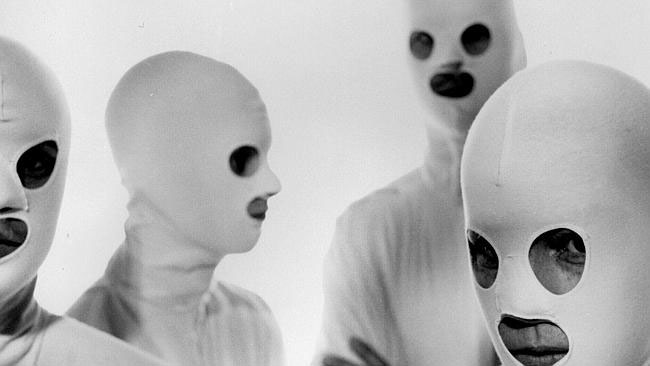 Ron Hitler-Barassi to James Wakelin, Behind The Masks: The Advertiser, 1998in the same month, stalwarts Divinyls reached a career pinnacle with their global monster hit, ‘I Touch Myself’, which found its way onto numerous movie soundtracks, most notably ‘Austin Powers: International Man Of Mystery’. Immensely popular rockers Baby Animals also burst out of the end of 1991 with their huge hits, ‘One Word’ and ‘Early Warning’. Yothu Yindi scored a huge hit with ‘Treaty’ by blending indigenous and dance music and introduced the issue of a treaty with the government into the national consciousness.
Ron Hitler-Barassi to James Wakelin, Behind The Masks: The Advertiser, 1998in the same month, stalwarts Divinyls reached a career pinnacle with their global monster hit, ‘I Touch Myself’, which found its way onto numerous movie soundtracks, most notably ‘Austin Powers: International Man Of Mystery’. Immensely popular rockers Baby Animals also burst out of the end of 1991 with their huge hits, ‘One Word’ and ‘Early Warning’. Yothu Yindi scored a huge hit with ‘Treaty’ by blending indigenous and dance music and introduced the issue of a treaty with the government into the national consciousness.
The J files
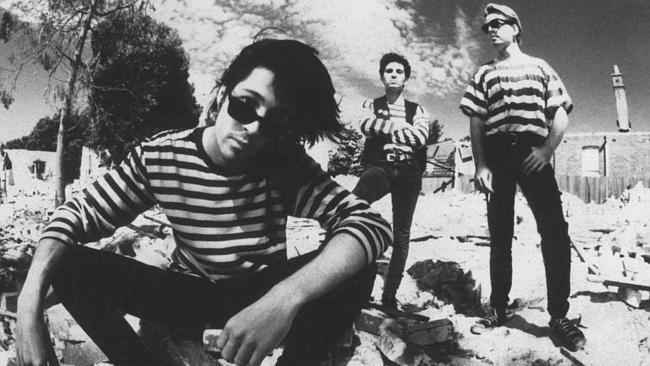 Ratcat: That ain’t bad by NothingtonobodyIn the alternative corner, RatCat exploded out of Sydney and onto the scene with their indie guitar gems, ‘Don’t Go Now’ and ‘That Ain’t Bad’, while Clouds, Hummingbirds and Falling Joys lead the 90’s advent of female-fronted indie and alternative guitar bands worthy of their US counterparts. The style was a bit more aggressive and upfront than 80’s indie and alternative guitar-based music, but crisp, direct and very melodic. In 1992, the first Big Day Out rock festival made its appearance, touring the nation, showcasing the top international and local bands, was an immediate success and proved the backbone of the live alternative music scene and youth culture in Australia in the 90’s. At the same time, Australian national radio station Triple J’s Hottest 100 countdown started to become the other major influential force in the Australian youth, alternative and general music culture.
Ratcat: That ain’t bad by NothingtonobodyIn the alternative corner, RatCat exploded out of Sydney and onto the scene with their indie guitar gems, ‘Don’t Go Now’ and ‘That Ain’t Bad’, while Clouds, Hummingbirds and Falling Joys lead the 90’s advent of female-fronted indie and alternative guitar bands worthy of their US counterparts. The style was a bit more aggressive and upfront than 80’s indie and alternative guitar-based music, but crisp, direct and very melodic. In 1992, the first Big Day Out rock festival made its appearance, touring the nation, showcasing the top international and local bands, was an immediate success and proved the backbone of the live alternative music scene and youth culture in Australia in the 90’s. At the same time, Australian national radio station Triple J’s Hottest 100 countdown started to become the other major influential force in the Australian youth, alternative and general music culture.
While rooted in the alternative, Triple J and the Hottest 100’s crossover appeal and general popularity were huge, and worked simultaneously with the Big Day Out in creating the springboard for the explosion in the alternative music scene in Australia and around the world, led by the US, in the 90’s. The 1992 Big Day Out showcased numerous vital Aussie bands of the day, from Yothu Yindi to Ratcat, The Clouds and Falling Joys. Sydney-based alternative band Def FX concocted an appealing blend of dance and rock with Surfers Of The Mind, while Wollongong psychedelic rockers Tumbleweed began to make some inroads in the underground with singles ‘Acid Rain’ and ‘Stoned’, becoming popular on the live scene and managing to score the support slot touring with Nirvana.
Melbourne based band The Badloves had huge success with album ‘Get On Board’, from which ‘Green Limousine’ was their biggest single. Meanwhile, the old guard of Australian rock and pop rode high, Midnight Oil’s ‘Blue Sky Mining’ and its singles and 80’s heroes Crowded House’s ‘Woodface’ were both huge hits in 1992 and highly influential on the society and culture of the early 90’s, widely embraced by the youth. The much-beloved singles 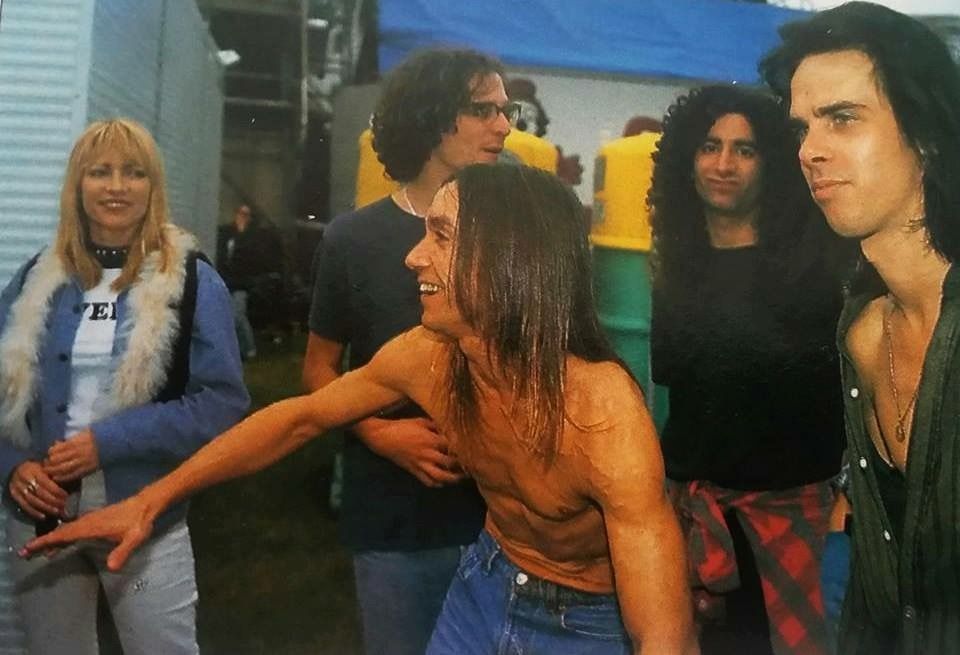 Big Day Out 1993 Kim Gordon, Iggy Pop and Nick Cavefrom these albums are still played on Triple MMM and classic hits stations around Australia today and still sound great, 26 years after their release. INXS released ‘X’ in 1990, with its well-received hits, ‘Suicide Blonde’ and Disappear’. ‘Welcome To Wherever You Are’ in 1992 found INXS sounding a little bit like bloated, cashed up rock dinosaurs, the riches earned from investing in ‘Crocodile Dundee’ finally having blurred their vision and direction a little bit musically it seemed, but still producing respectable enough hits such as lead single, ‘Bitter Tears’.
Big Day Out 1993 Kim Gordon, Iggy Pop and Nick Cavefrom these albums are still played on Triple MMM and classic hits stations around Australia today and still sound great, 26 years after their release. INXS released ‘X’ in 1990, with its well-received hits, ‘Suicide Blonde’ and Disappear’. ‘Welcome To Wherever You Are’ in 1992 found INXS sounding a little bit like bloated, cashed up rock dinosaurs, the riches earned from investing in ‘Crocodile Dundee’ finally having blurred their vision and direction a little bit musically it seemed, but still producing respectable enough hits such as lead single, ‘Bitter Tears’.
1994 brought with it an explosion of alternative, dance and pop music, taking this quintessentially 90’s concoction to another level, corresponding to that in America. That was the great thing about the 1990’s, every year had its own distinct flavour and tonality and, in a sense, was its own joyously rich, varied and textured self-contained universe, although you could roughly lump 1990-1993 in together as the first 90’s phase. Triple J’s first Hottest 100 CD was released in this year, based on its January countdown of 1993’s most popular hits as voted by the listeners. The Hottest 100 album did serious business and was the soundtrack to many a young Australian’s lives throughout the year, as it was in every year that followed, becoming as hugely popular and vital to young people’s cultural lives as the Big Day Out did.
In music, 1994 was undeniably Silverchair’s year in Australia, with the release of ‘Tomorrow‘, a winningly rousing anthem convincingly documenting personal complacency that became the soundtrack of youthful angst and jubilant, explosive whimsy everywhere that year, at parties, neighbourhood back yards, street corners, service stations and the private worlds of Walkmen and car stereos, orchestrated extensively by Triple J initially, connecting everybody through the broader discourse of collective personal and social values that ‘Tomorrow’ lead us to question and discuss. It was also a cultural celebration of Australianness, redefining that experience with the alternative spirit of grunge. Which was a very 90’s thing, acknowledging the weirdness and asymmetry of ourselves and our lives.
The lyrics of ‘Tomorrow’ invited a discussion about self-examination and united us all in it, saying it was ok to be broken, different and weird and that we could confront the underbelly in ourselves and society. It was an extremely liberating and quite romantic force of the 90’s that ‘Tomorrow’ encapsulated. The sheer skill and talent evident in the song and lead singer Daniel Johns’ vocals and guitar work underlay the novelty factor of the boys’ being only 14 at the time of release, having evolved from their original incarnation Innocent Criminals, winning national Battle of the Bands in 1992. Strongly influenced by their grunge heroes Pearl Jam and Helmet, even Hole lead singer and Kurt Cobain widow Courtney Love scathingly quipped, “so the singer looks like my dead husband and they sound like Pearl Jam, great’.
Elsewhere, Triple J-backed alternative dance and indie acts abounded, from Itch-e and Scratch-e with their sublime hit ‘Sweetness and Light’ to Underground Lovers and ‘Losin’ It’ and Falling Joys’ hypnotic Testament Remix of ‘Amen’. 1994 was a very special year, with a huge burst of creativity, dry, summery and balmy in tone, here in Australia and America, with a truly epic feel and presence. Instant indie rock favourites You Am I had a hit with ‘Berlin Chair’ with their 60’s working class-nostalgic kitchen sink rock aesthetic. Dave Graney ‘n’ the Coral Snakes developed a big following and became hipsters’ choice with the release of their album ‘You Wanna Be There But You Don’t Want To Travel’ and single, ‘I’m Gonna Release Your Soul’, building on the success of 1993’s ‘Night of the Wolverine’.
Musicals, Films & Soap Opera Crossovers
A new filmmaker named Baz Luhrman appeared in 1992 with his film, ‘Strictly Ballroom’, which became a huge hit, introducing us all to Luhrman’s world of dreams, romantic whimsy and joyful surreal fantasy, teaching us about the value of not living a life half-lived through the world of ballroom dancing, illuminating the hearts and inspiring 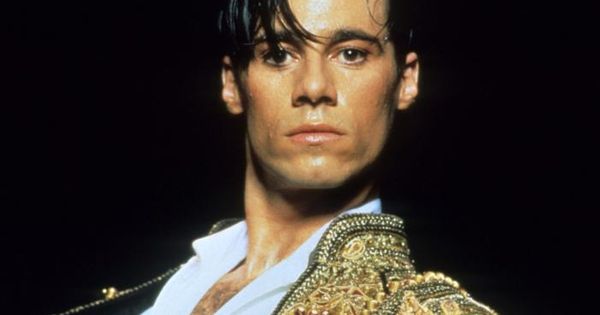 Picture: Paul Mercurio Strictly Ballroom the passions of young and old the nation over. ‘Strictly Ballroom’ introduced us to ballroom dancers extraordinaire Paul Mercurio and Tara Morice, while beloved veteran Bill Hunter played the role of meddling dance adjudicator Barry Fife. Gritty Melbourne-based ‘Romper Stomper’ was released in the same year, launching the career of Russell Crowe and creating much controversy with its all too real depiction of Neo-Nazi racism targeting the Vietnamese community in Footscray.
Picture: Paul Mercurio Strictly Ballroom the passions of young and old the nation over. ‘Strictly Ballroom’ introduced us to ballroom dancers extraordinaire Paul Mercurio and Tara Morice, while beloved veteran Bill Hunter played the role of meddling dance adjudicator Barry Fife. Gritty Melbourne-based ‘Romper Stomper’ was released in the same year, launching the career of Russell Crowe and creating much controversy with its all too real depiction of Neo-Nazi racism targeting the Vietnamese community in Footscray.
Dannii continued the tradition of soap opera-music career crossover that started with Kylie and Jason Donovan in the late 80’s, Kylie having gotten her start in ‘Neighbours’ as everybody knows, with Dannii’s greatly popular stint as bad girl Emma Jackson in ‘Home and Away’, a hugely influential show in Australian youth culture at the time. Another soap opera-pop music crossover occurred in the unlikely form of early 90’s Sydney based soap ‘E Street’ star Toni Pearen, with catchy dance pop hits, ‘In Your Room’ and ‘Walkaway Lover’, which became a minor but potent gay anthem. 1994 also launched the career of celebrated Australian auteur Rolf de Heer, with the release of his independent film debut, ‘Bad Boy Bubby’, an outrageous and darkly humorous social commentary taking on some warped, taboo themes few filmmakers would dare to tackle. But it was two films that were released in the latter part of the year that would really make a huge impact, to become an integral part of the national psyche and lore ever since, ‘Muriel’s Wedding‘ and ‘Priscilla, Queen of the Desert’.
 Picture: Natalie Imbruglia @ Lexington, London Natalie Imbruglia was another ‘Neighbours’ star that made the transition to pop music and became one of the biggest pop stars of 1997 overnight with single, ‘Torn’, follow up ‘Big Mistake’ and album ‘Left of the Middle‘. Imbruglia remained highly popular and widely played throughout 1998, while in October 1997, fellow ‘Neighbours’ émigré Kylie Minogue released her first album in four years, ‘Impossible Princess‘, which was a diversion from her previous albums, more acoustic sounding and guitar and band based co-writing with members of indie bands Manic Street Preachers and St. Etienne on a few tracks, while others, such as ‘Breathe’ and ‘Through The Years’ were more dream pop.
Picture: Natalie Imbruglia @ Lexington, London Natalie Imbruglia was another ‘Neighbours’ star that made the transition to pop music and became one of the biggest pop stars of 1997 overnight with single, ‘Torn’, follow up ‘Big Mistake’ and album ‘Left of the Middle‘. Imbruglia remained highly popular and widely played throughout 1998, while in October 1997, fellow ‘Neighbours’ émigré Kylie Minogue released her first album in four years, ‘Impossible Princess‘, which was a diversion from her previous albums, more acoustic sounding and guitar and band based co-writing with members of indie bands Manic Street Preachers and St. Etienne on a few tracks, while others, such as ‘Breathe’ and ‘Through The Years’ were more dream pop.
‘Muriel’s Wedding’ gave ABBA a whole new lease on life with its joyous celebration of their songs as Muriel’s favourite group and ‘Priscilla’ came out of left field, introducing gay culture into the national consciousness like never before, albeit in a stylised, surreal way. Nevertheless, it jettisoned the Oxford St and Darlinghurst drag culture into the mainstream, quite accurately capturing the colour, messiness and drama of that world, quite an achievement and winning its costume designers, Lizzy Gardiner and Tim Chappel an Oscar for Best Costume at the 1995 Academy Awards. Combined, the two movies contributed a sense of jubilant, roaring good fun and high times to the second half of 1994. In a related and interesting diversion, Russell Crowe played a working class, inner Sydney gay man in ‘The Sum of Us’, also released at the end of the year, living with his widowed father played by Jack Thompson.
1996 was also the year Baz Luhrman released his second feature, his adaptation of the Shakespeare play, ‘Romeo + Juliet’ starring Leonardo Di Caprio and Clare Danes towards the end of the year. A huge hit, ‘Romeo + Juliet’ had high school students learning Shakespeare in droves and continued its reign as a major popular culture phenomenon amongst youth in Australia and the US in particular into 1997, where most of its box office was recorded, becoming the ninth highest grossing film in Australia of that year. ‘Romeo + Juliet’ catapulted Baz Luhrman into superstardom as he expanded his flamboyant, surreal and fantastic imaginative style considerably and pushed di Caprio in particular in the direction of superstardom, which he was to fully realise within another stratosphere with ‘Titanic’ in 1997.
Technological Changes
1994 also saw the advent of the internet into public usage, which in itself was a huge thing, although it wasn’t widely used at the time and take-up was gradual amongst the population until 1997-8. Newspaper articles began to appear with mysterious-looking URL’s explaining how to use them, which at the time seemed like the most oh-so sophisticated, high tech tools from an alien world. We had a huge amount of excitement and anticipation about the internet, the public knew this was something big and there was a huge amount of excitement and interest in the internet. Instinctively, many of us knew just how monumental a transformation this would bring, though none of us could probably imagine just the extent to which the internet would change the way humanity communicated and accessed information.
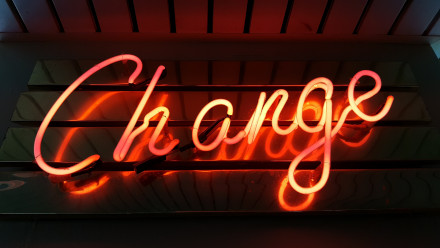 Picture courtesy of Ross Findon @rossfThis coincided with the appearance of the mobile phone, whose appearance in widespread use during the late 90’s occurred at the same time as take-up of the internet became widespread. Netscape was the browser of choice, soon to be followed by Microsoft’s Internet Explorer, internet connection had to be manually initiated from a computer to the external modem with the famous bouncing, electronic machine sound of the connection and pictorial download speeds were so slow that we would find them amusing today. However, the internet was almost completely unregulated and uncommercialized compared to today and search engines were all raw searches. There was no SEO or Google and as the internet evolved, this meant access to powerful and deep-reaching information on any conceivable subject.
Picture courtesy of Ross Findon @rossfThis coincided with the appearance of the mobile phone, whose appearance in widespread use during the late 90’s occurred at the same time as take-up of the internet became widespread. Netscape was the browser of choice, soon to be followed by Microsoft’s Internet Explorer, internet connection had to be manually initiated from a computer to the external modem with the famous bouncing, electronic machine sound of the connection and pictorial download speeds were so slow that we would find them amusing today. However, the internet was almost completely unregulated and uncommercialized compared to today and search engines were all raw searches. There was no SEO or Google and as the internet evolved, this meant access to powerful and deep-reaching information on any conceivable subject.
It was at this time that digital recording and production techniques of mastering and compression were developed and introduced into music distribution and production. This greatly affected CD quality and sound, CD’s being able to be recorded at higher volume levels than vinyl and sonic compression giving the impression of louder volume. Compact discs made longer albums possible and digital processing allowed producers to pitch shift instruments and vocals, adding a polish to the final product not seen before. The 1990s proved pivotal for the music industry as analog gave way to digital, changing many elements of the music world. Cassettes were superseded by CDs and later on, MP3 files and CD-ROMs, which could be burned on personal computers. The controversial evolution of file sharing and CD bootlegging permanently changed the music industry’s revenue model.
The Mid 90s
Silverchair powered ahead with second single, ‘Pure Massacre’ in early 1995, which while not as huge a hit as ‘Tomorrow’, the album that spurned them, ‘Frogstomp‘ was, becoming the number one selling album of the year in Australia. ‘Frogtsomp’ united people, as the biggest albums always do, creating a sense of good-natured unity amongst Australian youth throughout the year in the 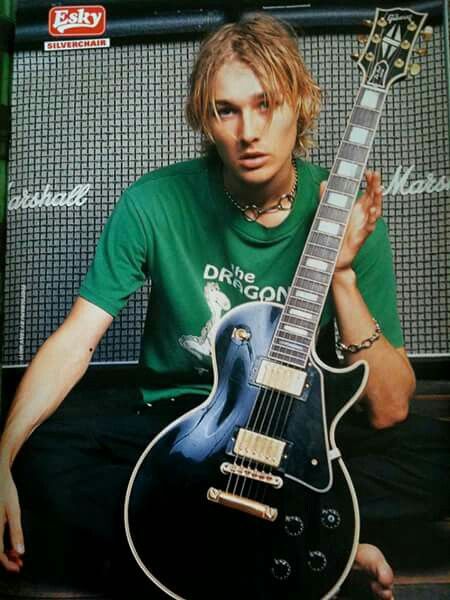 Picture Daniel Johns courtesy of tiffany elliottexperience of collective enjoyment and expression that it brought. There was a sense of pride that it was something Australian that was uniting us all but something a bit sophisticated and cultured too, not Barnesy. Singer Daniel Johns proved to have quite the social conscience too, with songs such as ‘Pure Massacre’ and ‘Israel’s Son’ detailing political killings around the world, quite unusual for youth of the day and for young rock fans to be interested in.
Picture Daniel Johns courtesy of tiffany elliottexperience of collective enjoyment and expression that it brought. There was a sense of pride that it was something Australian that was uniting us all but something a bit sophisticated and cultured too, not Barnesy. Singer Daniel Johns proved to have quite the social conscience too, with songs such as ‘Pure Massacre’ and ‘Israel’s Son’ detailing political killings around the world, quite unusual for youth of the day and for young rock fans to be interested in.
Johns said in interviews at the time that the ideas for these songs came from watching the World News and documentaries on SBS. Still in the alternative scene, TISM were back with a more techno-influenced sound that singer Damian “Humphrey B Flaubert” Cowell had expressed an interest in with the raucous and insanely catchy, ‘He’ll Never Be An Ol’ Man River’, the “I’m on the drug that killed River Phoenix” song, which was a huge hit. Although hailing from the alternative originally, both TISM and Silverchair were huge in the mainstream, completely crossing over. TISM scored the biggest hit of their career with following album ‘Machiavelli and the Four Seasons’ reaching #5, spawning another much-loved single, ‘Greg, the Stop Sign!’ and earlier in the year in January were one of the highlights of the Big Day Out, with their outrageous show.
In pop, Tina Arena made herself a huge star in late 1994 with the release of her torchy belter, ‘Chains‘ from mega-successful ‘Don’t Ask’, followed up by a solidly successful and much beloved second single, ‘Sorrento Moon‘. Third and fourth singles, ‘Heaven Help My Heart‘ and ‘Wasn’t It Good‘ also did well and cemented Tina Arena as a major force in Australian pop music and classy and high quality as well. Also re-emerging was Peter Andre in 1995 with a solid hit, reggae-pop song ‘Mysterious Girl, while Christine Anu released her cover of the Warumpi Band’s song ‘Island Home’, which while originally not a big hit, eventually became another of those songs that became unofficial national anthems. Though some may have seen it as a paean to Australian nationalism, it served as a touching tribute to indigenous life, culture and heritage, something we could listen to, learn from and celebrate. Later in the year, Anu had a second, minor hit with the still-loved ‘Party’. Deni Hines, now solo after a successful stint with the Rockmelons, had one of the biggest Australian hits of the year with infectious, uplifting single ‘It’s Alright’, reaching #4 in October, the video being filmed on Anzac Bridge in Sydney.
Kylie’s hits from last year’s ‘Kylie Minogue’ continued, with ‘Put Yourself In My Place’ released as a single mid-year, becoming a classic, and the hypnotic BIR Dolphin remix of ‘Where Is The Feeling’ released later in the year. As was her duet with Nick Cave, ‘Where The Wild Roses Grow’, from his ‘Murder Ballads’ CD, released just in time to become a summer soundtrack and another huge hit. Kylie was a powerhouse and could do no wrong. Tina Arena also continued to have hits from last year’s smash ‘Don’t Ask’ with ‘Heaven Help My Heart’ and ‘Wasn’t It Good?’ Chocolate Starfish released the memorable minor single, ‘Accidentally Cool’ and closer to the underground, Strawpeople released the alternative dance classic, ‘Trick With A Knife’.
Which along with the video still looks and sounds great, even by today standards, shot in black-and-white film noir style in a simple, elegant way and a bit of humour. ‘Trick With A Knife’ highlights the prevalence of dance music in the 90’s, with production and recording techniques and sound becoming noticeably more polished, glossy and expensive-sounding in 1995. A real transformation was occurring, that burst out of the second half of the 90’s and infiltrated pop and dance music extensively. Ex-Euphoria svengali Andrew Klippel released dance-funk tune ‘Love You Right’ and Def FX, after a hiatus returned with ‘Psychoactive Summer’, in summer, with a cheeky video celebrating the burgeoning alternative hippie “feral’ lifestyle and culture that appeared in the second half of the 90’s.
The kings of Australian alternative hipster rock in 1995 however, were undoubtedly Dave Graney ‘n’ the Coral Snakes, with their sly, lounge-influenced social commentary and observation and Graney’s acidic, playful sense of irony on their 1995 release, ‘The Soft N’ Sexy Sound’ with lead single, ‘Rock n’ Roll Is Where I Hide’. Dave Graney ‘n’ the Coral Snakes were hugely popular from hereon in for most of the 90’s. The Whitlams began to make inroads with their amusing gem, ‘I Make Hamburgers’, while Tumbleweed reached their career peak with album, ‘Galactaphonic‘, reaching #6 in May. Towards the end of the year, 70’s-influenced, party funk group Swoop had a very big hit with ‘Apple Eyes’ and Melbourne based R n’ B and dance pop group CDB, four Indian boys hailing from Dandenong, scored a number one with their cover of Earth, Wind and Fire’s 70’s disco classic, ‘Let’s Groove’.
1996 saw the emergence of three groups who would become major Australian bands, Powderfinger with album ‘Double Allergic‘, from which came a string of hits including the beloved ‘D.A.F.’ and fellow Brisbanites Regurgitator with album ‘Tu-Plang‘. Both these bands were taken up voraciously by Triple J and became alternative darlings within the year, particularly Powderfinger who became huge into the 2000’s, whereas Regurgitator’s star began to rapidly wane by decade’s end. From Melbourne, the third of these bands Spiderbait were jettisoned from the underground with their smash hit album, ‘Ivy And the Big Apples‘, whose first single, ‘Buy Me A Pony’ became the number one song on the Triple J Hottest 100 for that year. In the punk and melodic hardcore scene, Frenzal Rhomb emerged with single ‘Punch In The Face’ from album, ‘Not So Tough Now’ and began to make an impression, while the Fauves had a Triple J favourite that year with ‘Dogs Are The Best People’.
Pop Smarts
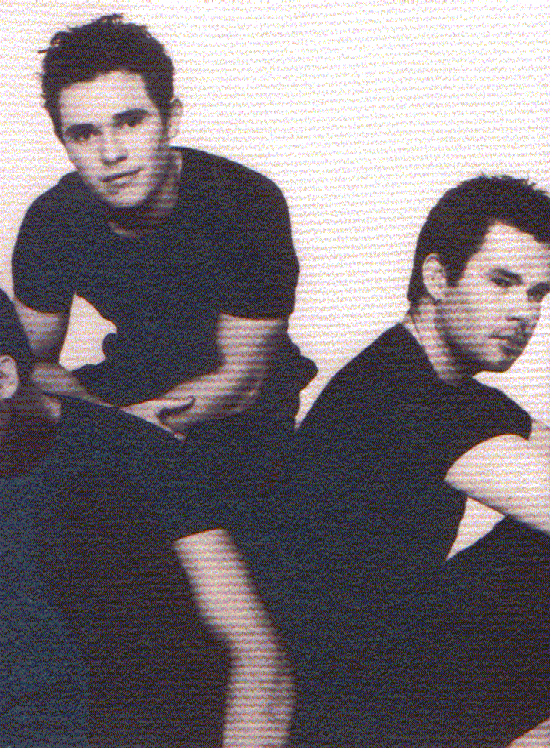 Picture Michael Tierney courtesy of OoCitiesIn pop, the two big new groups that emerged were Savage Garden and Human Nature. While Human Nature went on to enjoy a successful pop career during the latter 90’s, it was Savage Garden who were to become huge due to the incredible pop smarts and songwriting talent of singer Darren Hayes in particular, although it has to be said the Tierney brothers Mike and Andrew from Human Nature were possessed of sharp ears and superior songwriting talents also, writing high quality soul and dance pop songs.
Picture Michael Tierney courtesy of OoCitiesIn pop, the two big new groups that emerged were Savage Garden and Human Nature. While Human Nature went on to enjoy a successful pop career during the latter 90’s, it was Savage Garden who were to become huge due to the incredible pop smarts and songwriting talent of singer Darren Hayes in particular, although it has to be said the Tierney brothers Mike and Andrew from Human Nature were possessed of sharp ears and superior songwriting talents also, writing high quality soul and dance pop songs.
In May 1996 Savage Garden released first single, ‘I Want You’, an infectiously catchy song that seamlessly blended dance with guitar pop, complete with picture of a garden gnome appearing to burst out of hyperspace on the cover. ‘I Want You’ conveyed possibly gay, late 80’s Gold Coast nightclub culture with the way the dance element of its sound was produced. Thus it was simultaneously trashy and sophisticated, the somewhat trashy element only lasting for this one song, from hereon in Savage Garden erred for sophisticated, but also honest, down to earth radio pop. An instant global smash, ‘I Want You’ peaked at #4 both in Australia and the US, reaching #1 in Canada and #11 in the UK. At the end of the year they released ‘To The Moon and Back’, which did well overseas though not quite as well as ‘I Want You’, but reached #1 in Australia.
In March 1996, Human Nature released their debut single, ‘Got It Goin’ On’, which reached a respectable #19 in the Australian charts, a funky, r n’ b-influenced song that echoed Backstreet Boys’ debut single that year also, ‘We’ve Got It Goin’ On’, and was similar not just by name but in its sound also, though this was purely coincidental, and a result of the similar cultural and musical influences both singles were based on.
‘Got It Goin’ On’ was one of only two songs of this type Human Nature released, being a somewhat aggressive, cocksure girl-courting ode, an attitude Human Nature were to repeat only once more with second single ‘Tellin’ Everybody’ in July 1996 and not at all characteristic of Human Nature or their musical interests. That these songs were like that is a result of an initial desire for commercial appeal to launch their career, after which they released more sensitive, emotionally well-rounded music. Or in the case of their next two singles, epic, emotional ballads, such as their third and final single for the year, ‘Wishes’, a smash hit that reached #6 in Australia. From which point, Human Nature became a major force in Australian pop throughout the 1990’s, featuring the classy songwriting talents of the Tierney brothers and impressive vocal talents of all four members.
In 1997, Tina Arena released her third solo album ‘In Deep’, following on from the career-defining success of 1994’s ‘Don’t Ask’. ‘In Deep’ was another major success for Arena, with lead single ‘Burn‘ becoming a big hit and later being used as a theme song for the Australian team in the 1998 Commonwealth Games. Arena’s tours were a big success now, playing multiple dates at Rod Laver Arena and the Sydney Entertainment Centre. She followed up ‘Burn’ with the cheerfully catchy feminist anthem, ‘That’s The Way A Woman Feels’ and in 1998 with her cover of the Foreigner classic, ‘I Want To Know What Love Is‘. You might well wonder if this is an exercise in the completely unnecessary, but Arena did such a good job of it with a soulful, sensitive rendition even featuring Foreigner lead singer Lou Gramm on backing vocals, it was well worthwhile.
I Don’t Like It
Labour’s 13-year run with Bob Hawke and Paul Keating came to an end with the election of John Howard in March, winning on the back of a campaign against Labour’s high inflation, high national debt and a bad current account deficit. Pauline Hanson ran for the first time in the seat of Oxley originally as a Liberal, but they disendorsed her because her anti-immigration, anti-multicultural policies were seen as to distasteful and vote-losing and Hanson won the seat as an independent. Howard’s first major challenge occurred in April with the Port Arthur massacre committed by Martin Bryant. This galvanised the nation in support behind Howard as he legislated new gun laws banning the kind of semi-automatic rifles Bryant used to such lethal effect, and conducting a nationwide gun buyback, which saw about 700,000 guns handed in.
Pauline Hanson had been a continuing headache for the Howard government and social controversy since the formation of her One Nation party in 1997 with her anti-Asian immigration, anti-Aboriginal benefits schemes rhetoric. This controversy was harnessed by Sydney drag performer Pauline Pantsdown with her single, ‘I Don’t Like It’, satirising Hanson with edited samples of her voice from interviews, which mobilised youth across Australia, the vast majority of which was passionately opposed to Hanson and her politics, which were widely seen as implicitly racist.
Alternative Rock
Brisbane indie quirk-poppers Custard started making an impact with singles ‘Anatomically Correct’, ‘Music Is Crap‘ and album, ‘We Have The Technology‘.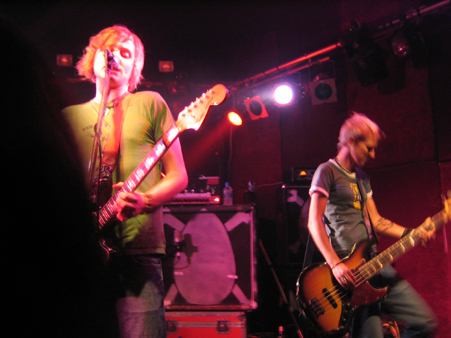 Jebediah performing live. Left to right: Kevin Mitchell, Vanessa Thornton.Yet another new band to make a big impression was Jebediah with ‘Military Strongmen’ and ‘Leaving Home’ from album, ‘Slightly Oddway’, which was a huge hit and Jebediah’s melodic, slightly punky, not too heavy alternative rock and tongue-in-cheek, ironically humorous approach to performance and their own image lead them to become one of the most-loved bands of the late 90’s. Dave Graney n’ The Coral Snakes still occupied the limelight in Australian music culture, but their popularity began to fade with album ‘The Devil Drives’ and the nevertheless worthy single, ‘Feelin’ Kinda Sporty’.
Jebediah performing live. Left to right: Kevin Mitchell, Vanessa Thornton.Yet another new band to make a big impression was Jebediah with ‘Military Strongmen’ and ‘Leaving Home’ from album, ‘Slightly Oddway’, which was a huge hit and Jebediah’s melodic, slightly punky, not too heavy alternative rock and tongue-in-cheek, ironically humorous approach to performance and their own image lead them to become one of the most-loved bands of the late 90’s. Dave Graney n’ The Coral Snakes still occupied the limelight in Australian music culture, but their popularity began to fade with album ‘The Devil Drives’ and the nevertheless worthy single, ‘Feelin’ Kinda Sporty’.
Powderfinger continued to enjoy massive popularity throughout 1997 with singles ‘Take Me In’ and ‘The Day You Come’ from Double Allergic, while Silverchair released their second album ‘Freakshow‘ with lead single ‘Freak’ which went to #1, continuing their own huge success. Spiderbait entered major mainstream popularity with single ‘Calypso’ from ‘Ivy and the Big Apples’, and new female-led band Superjesus appeared and quickly became one of 1997’s alternative rock favourites with single, ‘Down Again’. Rockabilly fans The Living End were another new band to appear on the scene, initially supported through Triple J and had another of the year’s biggest hits with ‘Prisoner of Society’. The biggest non-mainstream Australian song of the year by far though was The Whitlams’ beautiful, heartbreaking ode, ‘No Aphrodisiac’ from the album of the same name, constituting a career peak for them.
Nick Cave and the Bad Seeds had the biggest crossover song of their career with the meditative ‘Into Your Arms’, which became another unofficial national anthem. One new band to also appear were Grinspoon, who could play some quite heavy, sinister alternative metal tracks such as single ‘DCx3’ and catchy, poppier gems like ‘Just Ace’. Another was moody alternative racket outfit ‘Something For Kate’, who had a promising debut with album ‘Elsewhere For 8 Minutes‘ in 1997. While quite abrasive and sparse, it had aspects of a hypnotic, melodic quality that hinted at what Something For Kate were to blossom into in later years. At this point though, their sound was angular, a little bleak and caustic, but with just enough leavening melody to render them palatable.
Punk/Pop Rock
The Living End powered into 1998 with second single, ‘Second Solution’, as did Powderfinger with their release, ‘Internationalist’, although the album didn’t really spawn its biggest singles until 1999. 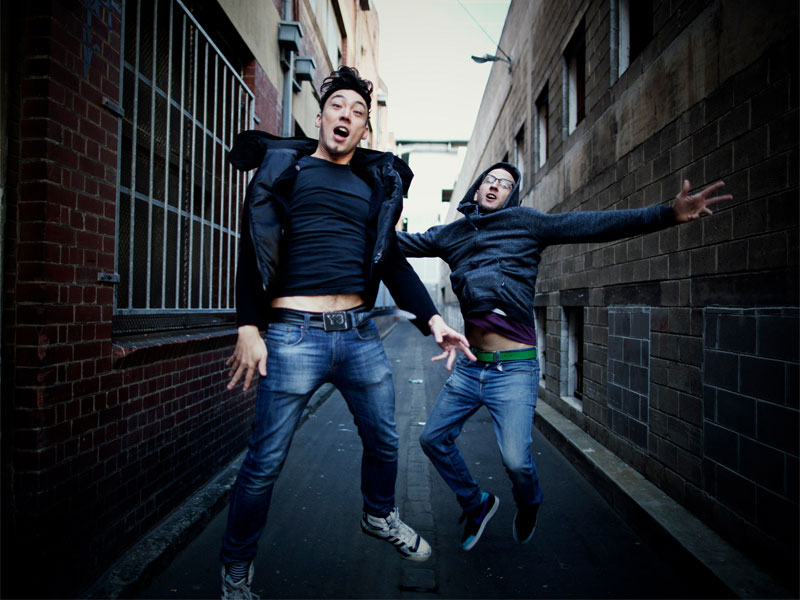 Left to right: Quan Yeomans, Ben Ely; RegurgitatorNevertheless, “the Finger” as they were affectionately known had become national heroes with their combination of honest working-class Aussie rock reminiscent of the 60’s and unpretentious but sophisticatedly written indie. 1998 was Regurgitator’s year though, with the singles from their wildly popular 1997 album ‘Unit‘ really taking off this year, and its catchy but clever songs, ‘Black Bugs’, ‘The Song Formerly Known As’ and ‘Polyester Girl’ were everywhere, being both jubilantly celebratory and wryly ironic social and cultural commentaries that everyone found simultaneously hilarious and liberating.
Left to right: Quan Yeomans, Ben Ely; RegurgitatorNevertheless, “the Finger” as they were affectionately known had become national heroes with their combination of honest working-class Aussie rock reminiscent of the 60’s and unpretentious but sophisticatedly written indie. 1998 was Regurgitator’s year though, with the singles from their wildly popular 1997 album ‘Unit‘ really taking off this year, and its catchy but clever songs, ‘Black Bugs’, ‘The Song Formerly Known As’ and ‘Polyester Girl’ were everywhere, being both jubilantly celebratory and wryly ironic social and cultural commentaries that everyone found simultaneously hilarious and liberating.
Further to this, Regurgitator’s lead singer Quan Yeoman and wife, Spiderbait’s Janet English had a hit as Happyland with ‘Don’t You Know Who I Am?’ with its much-loved bunny suits video, while Ben Lee’s star rose with his plaintive, beautiful single, ‘Cigarettes Will Kill You’. Custard had the biggest hit of their career with ‘Girls Like That (Don’t Go For Guys Like Us)’, reaching #3 on the Triple J Hottest 100 that year, TISM were back with album, www tism wanker dotcom, with single ‘Whatareya?’ flowing thematically in the chorus and the amusing accompanying aerobics class video. While the album didn’t chart as well as ‘Machiavelli’, it still did quite well, reaching #18. Something For Kate reappeared with second album, ‘Beautiful Sharks‘ in which he sound had mellowed considerably and started to show the wistful, beautiful melancholy that would come to characterise their sound and make them enormously popular early in the millennium.
Though they didn’t release an album in 1998, Human Nature continued along with three very solid singles, ‘Cruel’, ‘Last To Know’ and ‘Don’t Cry’, all of which reached the top end of the charts, cementing Human Nature’s position as a permanent force in pop. Which was quite a surprise and proved they were not a transient pop fluff act or a manufactured boy band, having been the Tierney brothers’ dream and then their bandmates Phil and Tobey since their teens in suburban Sydney.
Savage Garden stayed around in 1998 with the appearance of single, ‘The Animal Song’ which suited the summer in which it was released at the end of the year, an unusual, drum based, but light-filled, jubilant and whimsical song. Powderfinger’s biggest hits from ‘Internationalist’ came in 1999, ‘Passenger’ and ‘My Happiness’, which have remained Australian anthems to rock fans to this day, as well as the less remembered but still very good ‘Like A Dog’. Silverchair released their third album, ‘Neon Ballroom’, with the popular but arguably rather obvious and clumsy lead single, ‘Anthem For The Year 2000’ kicking off the year early in 1999. A slightly guilty pleasure perhaps, ‘Anthem’, while maybe a somewhat obvious as stated, youth rebellion song, was nevertheless enjoyable on a basic level, like fish and chips doused in vinegar by the beach on a summer’s day.
Also returning with second album, ‘Affirmation’ was Savage Garden, remaining wildly popular, starting with another US number one and Australian number four single, the delicate and romantic ‘I Knew I Loved You’, perhaps even more of a wedding song in Australia than ‘Truly, Madly, Deeply‘. It was followed by ‘Crash and Burn’ and title track ‘Affirmation’, all cheerily, highly popular. 1999 really was Savage Garden’s year in pop, their songs were played everywhere and they were loved by many. If first album ‘Savage Garden’ was saturated in a sense of fantasy and dreams supported by its lush production, ‘Affirmation’ had a distinct presence of realism, with its sonically more band and guitar sounding aesthetic and deep, hard-hitting themes in some of the album tracks.
Channel V on Foxtel also became a major player in the Australian scene towards the end of the 90’s, supporting pop, rock and alternative and working with the Big Day Out, broadcasting and supporting some of its biggest acts, including much beloved heroes such as Spiderbait with their excellent 1999 release Grand Slam, Jebediah, Regurgitator and Grinspoon.
Frenzal Rhomb released one of their most popular singles, the infectious gem, ‘Never Had So Much Fun’ from album, ‘A Man’s Not A Camel’, continuing their lively punk pop contribution to the Australian music scene.
The channel also introduced us to colourful and entertaining hosts who retain a visible presence on tv today on various levels, Yumi Stynes, Jabba and most notably today Andrew G, who now goes by his Jewish birth name Osher Gunsberg and hosts The Bachelor on the Ten network. Regurgitator returned in 1999 with ‘…art’, which performed solidly and was a Channel V and Triple J favourite with singles, ‘Freshmint!’ and ‘Happiness’. While these songs didn’t have the immediate appeal of those from previous album ‘Unit’, Regurgitator nevertheless continued to make an impression with their cynical but humorous social and artistic critiques of modern life.
If you appreciate this type of in-depth, independent, journalism, then please consider donating to keep this blog rolling! Your support is crucial and much appreciated. Many thanks to those of you who have already contributed.


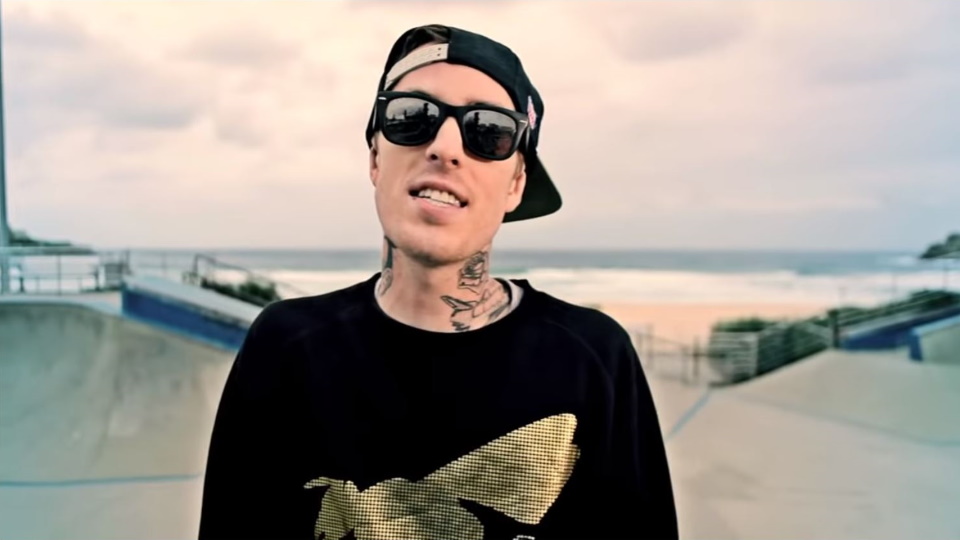
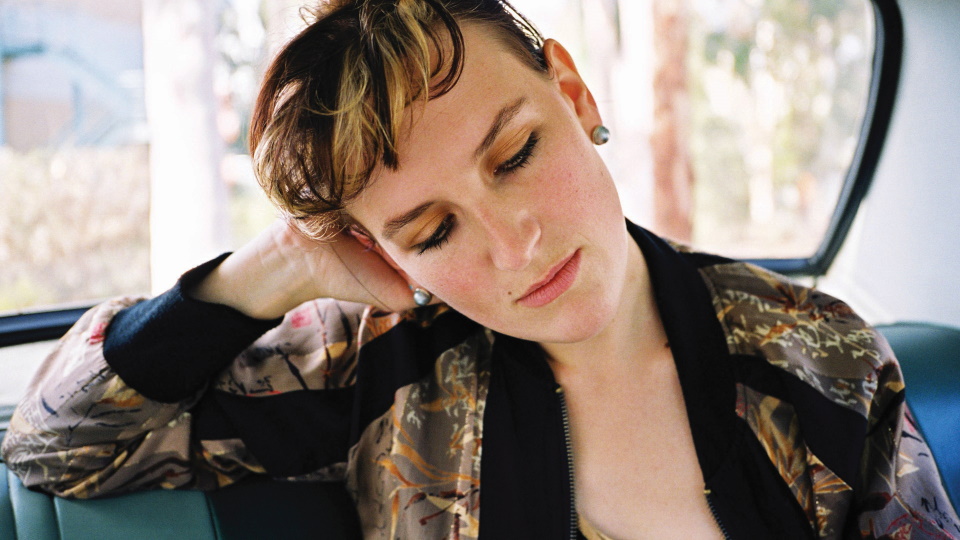
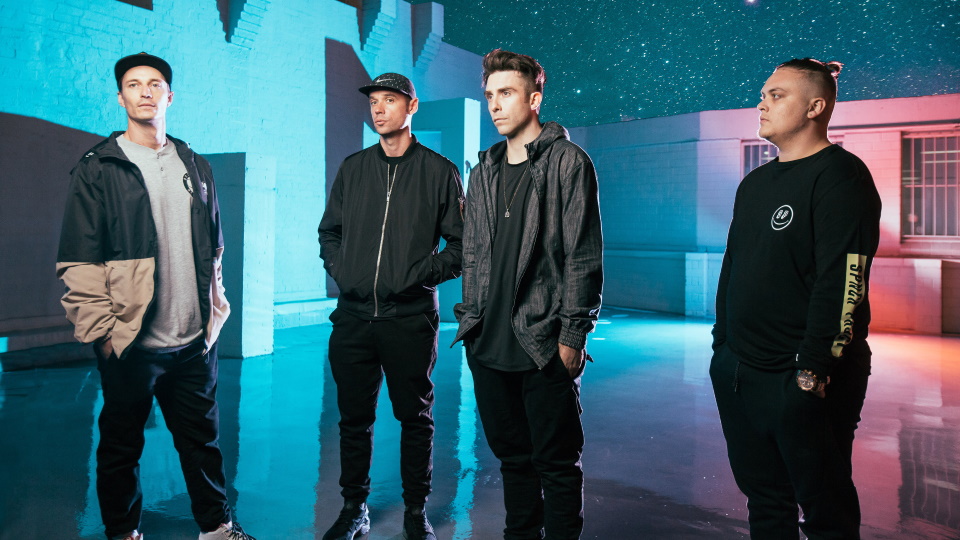

Ryan Kochkodin
January 12, 2020 (09:21)
This is a great tip particularly to those fresh to the blogosphere. Short but very accurate information… Appreciate your sharing this one. A must read article!
Keith Margate
January 15, 2020 (10:48)
Thanks Ryan, we certainly enjoy covering these topics and really appreciate your support.
frolep rotrem
March 22, 2020 (09:20)
Thank you for any other fantastic post. The place else may anybody get that type of info in such an ideal manner of writing? I have a presentation subsequent week, and I am on the search for such information.
Hayden Young
March 28, 2020 (12:34)
thanks very much, we really appreciate it! Maybe search Craig Mathieson, he’s a very good music journalist.
web hosting company
August 8, 2020 (00:14)
Hi, I do think your website could possibly be having browser compatibility problems.
Whenever I look at your website in Safari, it looks fine however when opening in IE,
it has some overlapping issues. I simply wanted to give you a quick heads up!
Other than that, wonderful site!
Keith Margate
August 9, 2020 (09:52)
Hi there thanks for the heads up, the compatibility issues that you talk about tend to be with older versions of IE! Is it possible you are using an older version of IE? As I do all the my work in IE and haven’t noticed any issues like that yet.
website hosting services
August 8, 2020 (13:49)
Excellent website. A lot of helpful information here. I am
sending it to several friends and also sharing in delicious.
And of course, thanks to your sweat!
Keith Margate
August 8, 2020 (14:06)
Thank you for your support! It’s much appreciated
best web hosting 2020
August 8, 2020 (20:06)
Sweet blog! I found it while browsing on Yahoo News. Do
you have any tips on how to get listed in Yahoo News?
I’ve been trying for a while but I never seem to get
there! Many thanks
Keith Margate
August 9, 2020 (09:42)
Thanks for your kind words. As for any tips on getting your article on Yahoo news all I can say is to keep working on your keyword ranking and never give up.
adreamoftrains webhosting
August 9, 2020 (06:55)
Greetings! I’ve been following your blog for
a long time now and finally got the courage to go ahead and give you a shout out from New Caney Texas!
Just wanted to mention keep up the excellent work! adreamoftrains best web hosting 2020
Keith Margate
August 9, 2020 (09:32)
Hey thanks for the shout out, we certainly enjoy covering these topics and really appreciate your support
24 hour bail bondsman Phoenix phoenixbailbond.xyz
October 11, 2020 (05:31)
This is a great blog.
Keith Margate
October 16, 2020 (07:12)
Hey thanks for that! We hope to release some more great blogs soon.
her response trading-u.com
October 11, 2020 (21:59)
I love reading your site.
Keith Margate
October 16, 2020 (07:05)
Thanks, your words of support are much appreciated.
visit this web-site afinancebroker.com
October 14, 2020 (05:19)
Great news once again!
Keith Margate
October 16, 2020 (07:22)
Thanks
my explanation dailynewyorktimes.com
October 14, 2020 (07:57)
I noticed one of your pages have a 404 error.
Keith Margate
October 16, 2020 (07:15)
Hey thanks for the heads-up! We’re constantly checking for these things but aren’t always able to notice everyone. We hope to have that fixed soon.
Josette
November 5, 2020 (06:21)
Hello to all, how is all, I think every one is getting more from this web site, and
your views are fastidious in favor of new people.
Damon
November 5, 2020 (09:48)
Greetings! Very helpful advice in this particular post! It is the little changes that will make the biggest changes.
Many thanks for sharing!
Willard
November 9, 2020 (18:33)
I really love your site.. Very nice colors & theme. Did
you develop this site yourself? Please reply back as I’m planning to create
my own personal blog and would like to find out where you got this from or exactly what the theme is called.
Thanks!
company website lapmjournal.co.uk
November 18, 2020 (18:23)
Have you ever considered about adding a little bit more than just your articles? I mean, what you say is important and all. Nevertheless think about if you added some great graphics or videos to give your posts more, “pop”! Your content is excellent but with images and videos, this website could definitely be one of the very best in its niche. Great blog!